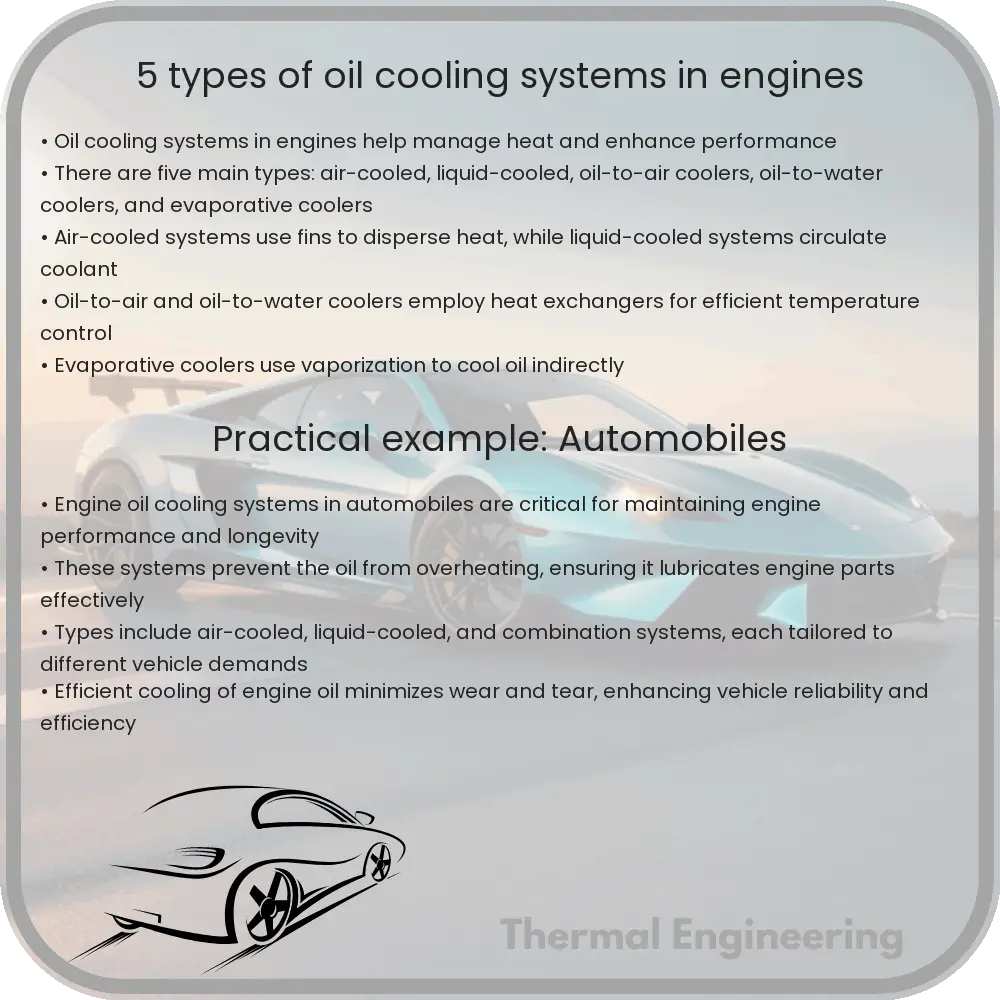Learn about the different types of oil cooling systems in engines, including air cooled, water cooled, and more, to enhance engine efficiency and longevity.

Introduction to Oil Cooling Systems in Engines
Efficient oil cooling is crucial for maintaining the longevity and performance of an engine. The primary function of engine oil is to lubricate the moving parts to reduce friction and wear. However, during operation, the engine generates substantial heat which, if not controlled, can lead to engine damage and reduced efficiency. Oil cooling systems help manage this heat. Here, we explore five common types of oil cooling systems used in various engines.
1. Air Cooled Oil Coolers
Air cooled oil coolers are one of the simplest types of oil cooling systems. These coolers utilize ambient air to cool the oil. Oil flows through finned tubes which increase the surface area for heat dissipation. As air passes over these fins, it absorbs the heat from the oil. This type is often found in motorcycles and smaller engines where space and simplicity are paramount.
2. Water Cooled Oil Coolers
Water cooled oil coolers use engine coolant to regulate the temperature of the oil. They are commonly used in car and truck engines. The oil cooler generally consists of a small radiator through which coolant flows, while oil circulates around it in tubes. This method is effective due to the higher heat capacity of water compared to air, allowing more efficient heat transfer.
3. Centrifugal Oil Coolers
Centrifugal oil coolers use centrifugal force to cool the oil. As oil enters the cooler, it is driven through a rotating impeller that throws the oil outward and against the walls of a housing. This process increases the surface area of the oil, enhancing the cooling effect. These coolers are particularly useful in applications where space is limited and high efficiency is required.
4. Thermosyphon Oil Coolers
Thermosyphon oil cooling is a passive cooling technique that relies on natural convection. Heated oil becomes less dense and rises to the top of the cooler, where it loses heat to the environment or a secondary coolant like air or water. As it cools, it becomes denser and sinks, creating a natural circulation loop. This type of cooler is often used in stationary engines and small generators.
5. Electric Cooling Fans
Electric cooling fans are used in conjunction with other oil cooling methods to enhance their effectiveness. They are particularly useful in situations where the natural airflow is insufficient, such as in slow-moving traffic or static applications. An electric fan can be attached to an air cooled or water cooled system, providing additional airflow or coolant circulation on demand.
Conclusion
Choosing the right type of oil cooling system depends on various factors including engine type, size, application, and operating conditions. Each cooling system type offers distinct advantages and is suited to particular scenarios. Understanding these systems helps in optimizing engine performance and longevity, ensuring that engines operate efficiently and reliably over their service lives.